

Looking to make your product a hit in the market? That’s what we’re all after.
For Notion, the community and word-of-mouth took it beyond $10 Billion.
But, I was curious as to what made Mailchimp go from 👇
Just a ‘Side Hustle’ to → ‘$800 Million in Revenue’?
Join me as I uncover their insider secrets in this 3-part article:
Part 1 – Mailchimp’s Masterstroke in Branding (Recommended read before Part 2)
Part 2 – Growth Strategies: Not by the books (Read below)
Part 3 – Mailchimp Traffic & SEO Playbook

These choices were very uncommon back when MailChimp started off.
But it led to new growth hacks that work for us even today!
Bootstrapping their business for 20 years, MailChimp faced several startup challenges:
But Ben, MailChimp CEO, handled them very effectively with what he calls tinkering and describes it as:
`Make small bets, fail fast and recalibrate, do not aim for moonshots as they are expensive!`

The customer has been their first and foremost source for tinkering.
Right from the start, they actively:
For example, they kept tinkering with features like:
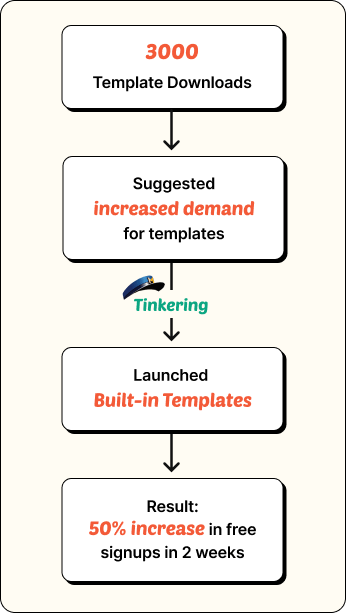

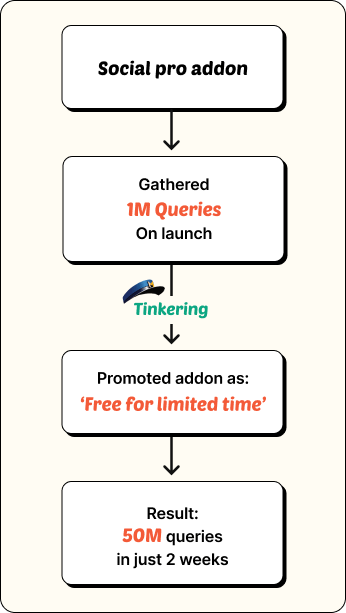

Mailchimp’s move to a freemium pricing model was a big game-changer. The numbers say it all:
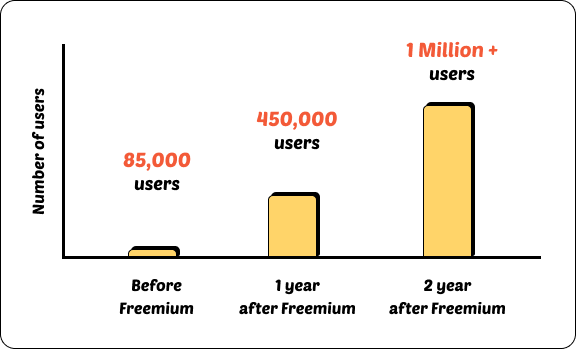
But Mailchimp didn’t suddenly wake up one day and decide to offer free plans to the world. It wasn’t a spur-of-the-moment choice, but a result of continuous tinkering with the pricing.
Mailchimp made a carefully calculated move shaped by
They experimented with various plans at different pricing points, from pay-as-you-go to monthly subscriptions.
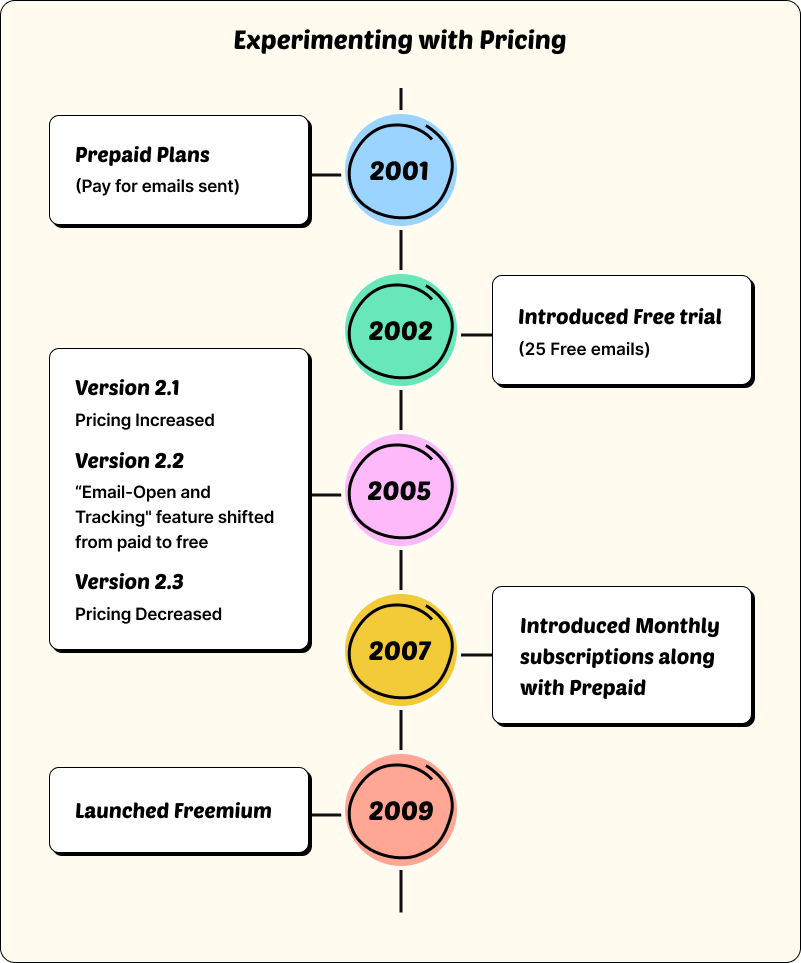
After each experiment, they gathered a wealth of data on factors like
This data was crucial in shaping Mailchimp’s approach to Freemium. After the success of the Freemium campaign, they strategically increased the subscriber count on the free plan twice. Results 🤯 👇

So should you launch a free plan right away? No!
Before diving into freemium, you must take note of Mailchimp’s 10:1 ratio –

This ratio is a sobering reality for startups considering freemium. Because it means that a majority of your users may not contribute directly to your revenue for a considerable period.
But you still need that revenue to keep the lights on, pay your team, and let you stash some cash for the future.
This is why going freemium before having a solid paying customer base is risky. You might end up in a situation where you need to borrow money just to keep the lights on. All this, while you work on figuring out how to make money from your free users.
So, if your 1 paid customer cannot bear the cost of 10 free users yet, you must reconsider the Freemium model.
Freemium being their biggest move, Mailchimp wanted to make the most out of it.
So they launched the ‘Power to People’ campaign✊, wherein they distributed 1000 free t-shirts & goodies using social media.
This was a calculated move since:
The `Power to People` campaign helped them in multiple ways:

Can you imagine API bringing in around 20 to 25% of your customers?
Indeed, that’s the scenario with MailChimp. In just 2 years, their API user count went from 19K to 188K—a whopping 889% increase!
Here’s the simple and easy-to-replicate API formula that worked for MailChimp back then and can work even better for us now!
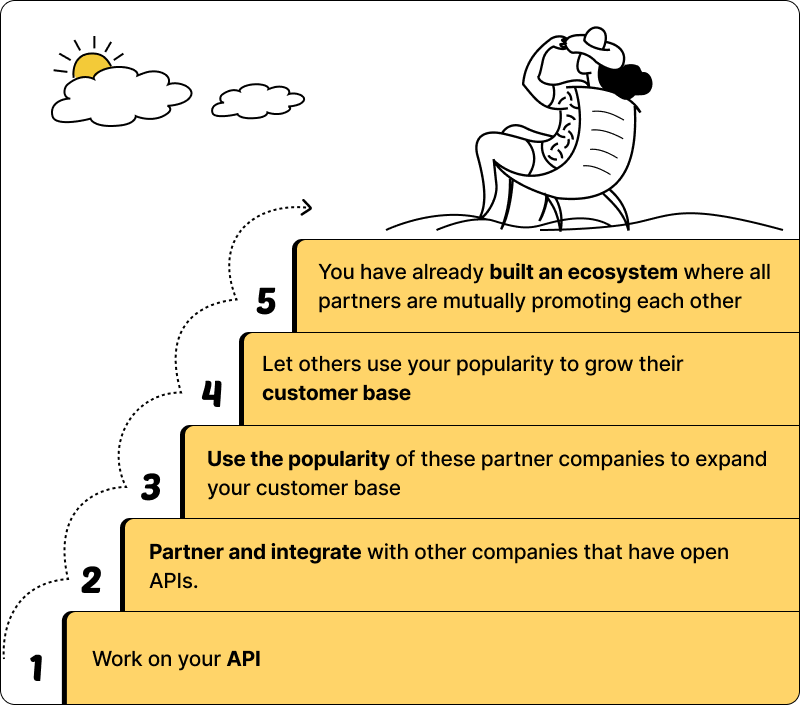
The API channel has contributed significantly to MailChimp’s overall customer base.
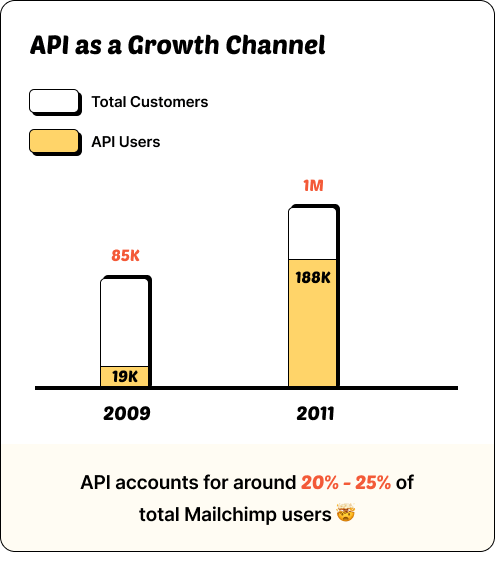
Even Ben testifies their use of API as a user magnet

Well, that’s not all!
API has also served as MailChimp’s customer retention channel. How?

Crazy marketing and new growth frameworks like ‘Tinkering, 10:1 Ratio for Freemium, and API for marketing’ established Mailchimp’s strong identity.
But to sustain the long run, they effectively capitalized on the SEO game as well.
Join me as I share their SEO playbook that drives them a monthly traffic of 6.2 Million!
Subscribe & get notified when Part 3 goes LIVE!
No spam. Promise. See privacy policy.

Free biweekly newsletter.
No spam. Promise. See privacy policy.